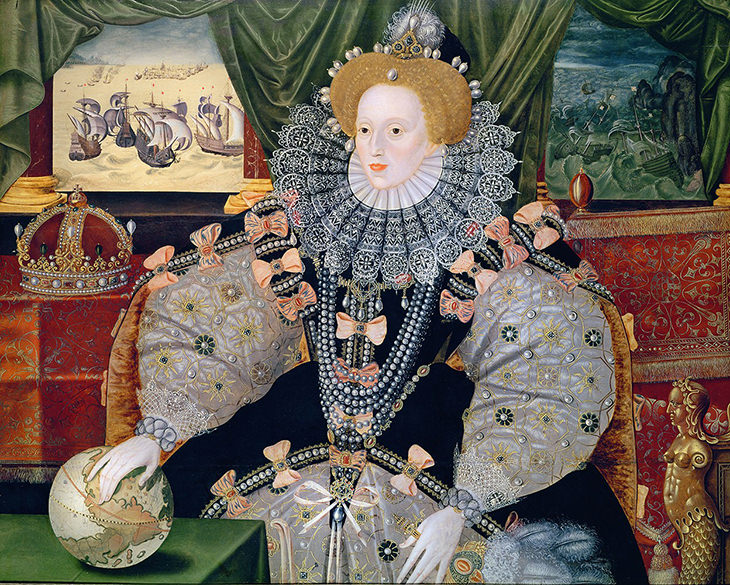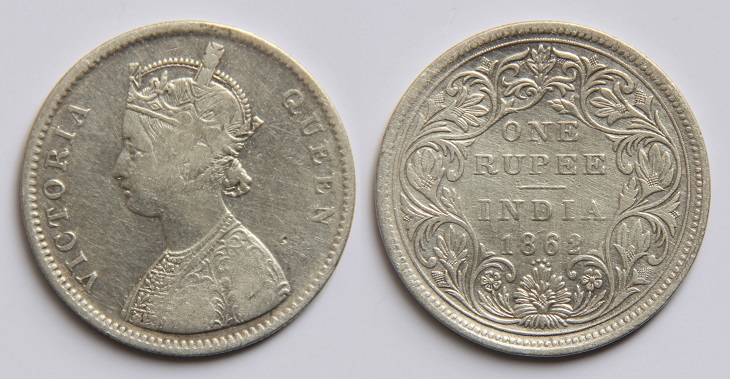
In 1600, Sir Thomas Smythe and a group of London merchants petitioned Queen Elizabeth I to allow them to trade with the countries of the Eastern Hemisphere, and so, the East India Company (EIC) was formed.
Very few could have predicted the seismic shifts in the dynamics of global trade that would follow, least still that over 250 years later the company would pass control of a subcontinent to the British crown. But how did this company gain and consolidate its power and profit?

At the same time that Elizabeth I was signing the EIC into existence in 1600, her counterpart in India – the Mughal emperor Akbar - was ruling an empire of over 750,000 square miles, stretching from northern Afghanistan in the northwest to central India’s Deccan plateau in the south and the Assamese highlands in the northeast.
By 1600, the Mughal Empire was at its height, and was embarking on a century of strong centralized power and military dominance that would mark the reign of the “Great Mughals.” The Mughal court possessed a wealth that could overshadow anything that Europe could produce at the time, while India’s natural resources and that of its artisans was coveted all over the world.
When the EIC first visited the Mughal court in the 17th century, they went as supplicants attempting to negotiate favorable trading relations with Akbar’s successor, Emperor Jehangir. The company had originally planned to force their way into the lucrative spice markets of south-east Asia but found that this trade was already dominated by the Dutch. After a number of EIC merchants were slaughtered at Amboyna (present-day Indonesia) in 1623, the company turned its attention to India.
With permission from Emperor Jehangir, the EIC began to build small bases and factories on India’s eastern and western coasts. From these coastal toeholds, they orchestrated a profitable trade in textiles, spices, and luxury goods. Meanwhile, the joint stock organization of the company spread the cost and risk of individual voyages between investors. The EIC grew in both stature and influence across the 17th and 18th centuries. Although they were always volatile, EIC shares became an important bellwether of the British economy and the company emerged as one of London’s most powerful financial institutions.
A Player in Politics

Initially, a junior partner in the Mughal Empire’s sophisticated commercial networks, the EIC became more involved in subcontinental politics in the 18th century. They fought to maintain their trading privileges in the face of decreasing central Mughal authority and the emergence of dynamic individual successor states.
European rivals also began to increase their presence in the subcontinent, with France emerging as a major national and imperial rival during the War of Austrian Succession and the Seven Years War. This increased the strategic importance of the EIC’s Indian footholds, and the country’s coastline became vital to further imperial expansion in Asia and Africa. In addition to maintaining a large standing army consisting primarily of sepoys (Indian mercenary soldiers who had been trained in European military techniques, the EIC was able to call on British naval power and crown troops garrisoned in India.
These military advances made the EIC a powerful player in local conflicts, as did the financial support offered by some local Indian merchants and bankers, who saw opportunity in the EIC’s increasing influence. After victories at the battles of Plassey (1757) and Buxar (1764), the EIC was granted the Diwani of Bengal – control over the administration of the region and the right to collect tax revenue. At the same time, the company was expanding its influence over the local rulers in the south, until the balance of power fundamentally shifted in the 1770s. By 1818, the EIC was the dominant political power in India, with direct control over two-thirds of the subcontinent’s landmass and indirect control over the rest.
A Colony of Exploitation
The first few years of EIC rule were notorious for their corruption and profiteering. Individual EIC employees amassed massive personal wealth, often at the expense of their Indian subjects. However, the late 18th century also saw the development of what would become the basis of the EIC state in India, as traders sought to become administrators and develop systems of rule that would be compatible with both their Georgian ideas of political economy and the specific circumstances in India.
India’s huge population and sophisticated political, social, and economic institutions made imperialistic ideas of terra nullius (empty land) inapplicable in India. Therefore, the EIC did not achieve the level of control over the resources of labor and land that characterized British communities in Australia, Canada, New Zealand, the Cape, and the Caribbean.
India was a colony of exploitation, not one of settlement. Its value to the EIC lay in the profits that could be amassed by controlling its internal markets and international trade, appropriating peasant production and collecting tax revenue. These taxes paid for the army and the EIC employees who worked in India.

The EIC’s rise to political power in India was the subject of heated debate in Britain. EIC activities in the wake of the 1757 Battle of Plassey were viewed with suspicion. William Cowper, a well-known poet at the time, wrote that the EIC “Build factories with blood, conducting trade / At the swords points, and dyeing the white robe / Of innocent commercial justice red.”
Against the backdrop of the loss of the American colonies, the emergence of the anti-slavery movement and the French Revolution, the “India Question” took on considerable political importance in the United Kingdom. The supposed immorality of the EIC in India, the fear of private and institutionalized corruption, and tensions between the British and Asiatic forms of governance resonated with wider concerns about what it meant to be an imperial power, and the responsibilities that they had to their non-white subjects overseas.
The India Question
Attempts to regulate the EIC's activities began in the 1770s, with North’s Regulating Act (1773) and Pitt’s India Act (1784), which sought to bring the company under closer parliamentary supervision. Meanwhile, a series of internal reforms under governor-general Charles Cornwallis in the late 1780s and early 1790s saw the EIC’s administration radically restructured in order to eradicate private corruption. This was a move to improve both the luster of its public image and the efficiency of its revenue-extracting machine. After the acquittal of Hastings and the implementation of the Cornwallis reforms, the company attempted to rehabilitate its reputation. It aimed to reposition itself as a benevolent and legitimate ruler that brought security of property and impartiality of justice to India.
The EIC tried to justify its presence in India by calling it a civilizing mission. However, the actual impact of its activities on local economies and societies was often very different. The first half of the 19th century was marked by an economic depression in India. Land tax demands and lack of investment stunted agricultural development, while traditional industries were decimated by the import of cheap manufactured goods.
While the British attitudes to India were soon characterized by pride and complacency rather than by self-flagellation, criticism of the EIC’s activities and their consequences did not completely disappear. Nor did the Indian population simply acquiesce to the EIC’s dominance. Dispossessed Indian rulers sent a number of delegations to London to protest mistreatment and breach of treaties on the EIC’s part, while various forms of both direct and indirect resistance were endemic throughout the period.
In the wake of the uprising of 1857, referred to as the “First War of Independence” in India, observers in Britain were quick to criticize the mistakes of the EIC. However, the ship had already sailed - once the uprising had been suppressed, with great losses on either side, control of India passed from the EIC to the Crown, ushering in the period of high imperialism in India.
Source: historyextra
Related Articles:
Inspiring Stories of Garage Start-Ups